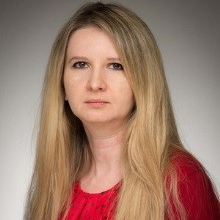Atmospheric Pressure Plasmas in Material Science
A special issue of Materials (ISSN 1996-1944). This special issue belongs to the section "Materials Physics".
Deadline for manuscript submissions: closed (30 September 2020) | Viewed by 26166
Special Issue Editor
Interests: ambient pressure and ultra-high vacuum X-ray photoelectron spectroscopy; atmospheric pressure plasma jets; dissociative electron attachment to gas-phase molecules
Special Issue Information
Dear Colleagues,
Atmospheric pressure plasmas are unique non-equilibrium systems that typically have an electron temperature that is relatively high in comparison to ion and gas temperatures, which are generally close to room temperature. Because of the partially ionized nature of this type of plasma, a unique set of conditions occurs, in which material processing benefits from chemical interactions, rather than the energetics of plasma components. Advanced plasma-material interactions enable new opportunities in material sciences, including nanostructure synthesis, film deposition, and surface functionalization, to name just a few. Moreover, by tuning plasma properties, it is possible to achieve the desired material composition, morphology and surface activity in a controlled manner. Thus, atmospheric pressure plasmas are an excellent means for fulfilling material requirements for industrial, environmental, and medical applications. This Special Issue focuses on the most recent advances in the plasma field, both at the fundamental level of physicochemical processes and at the more applied level, in order to provide current developments and findings that expand and deepen the understanding of atmospheric pressure plasma-material interactions.
Research articles, review articles, and communications related to experimental, theoretical, and simulation studies on the processes, properties, and applications of atmospheric pressure plasmas in material science are all invited.
Assoc. Prof. Sylwia Ptasinska
Guest Editor
Manuscript Submission Information
Manuscripts should be submitted online at www.mdpi.com by registering and logging in to this website. Once you are registered, click here to go to the submission form. Manuscripts can be submitted until the deadline. All submissions that pass pre-check are peer-reviewed. Accepted papers will be published continuously in the journal (as soon as accepted) and will be listed together on the special issue website. Research articles, review articles as well as short communications are invited. For planned papers, a title and short abstract (about 100 words) can be sent to the Editorial Office for announcement on this website.
Submitted manuscripts should not have been published previously, nor be under consideration for publication elsewhere (except conference proceedings papers). All manuscripts are thoroughly refereed through a single-blind peer-review process. A guide for authors and other relevant information for submission of manuscripts is available on the Instructions for Authors page. Materials is an international peer-reviewed open access semimonthly journal published by MDPI.
Please visit the Instructions for Authors page before submitting a manuscript. The Article Processing Charge (APC) for publication in this open access journal is 2600 CHF (Swiss Francs). Submitted papers should be well formatted and use good English. Authors may use MDPI's English editing service prior to publication or during author revisions.
Keywords
- atmospheric pressure plasmas
- material fabrication
- nanotechnology
- plasma processing
- surface functionalization
Benefits of Publishing in a Special Issue
- Ease of navigation: Grouping papers by topic helps scholars navigate broad scope journals more efficiently.
- Greater discoverability: Special Issues support the reach and impact of scientific research. Articles in Special Issues are more discoverable and cited more frequently.
- Expansion of research network: Special Issues facilitate connections among authors, fostering scientific collaborations.
- External promotion: Articles in Special Issues are often promoted through the journal's social media, increasing their visibility.
- e-Book format: Special Issues with more than 10 articles can be published as dedicated e-books, ensuring wide and rapid dissemination.
Further information on MDPI's Special Issue polices can be found here.






